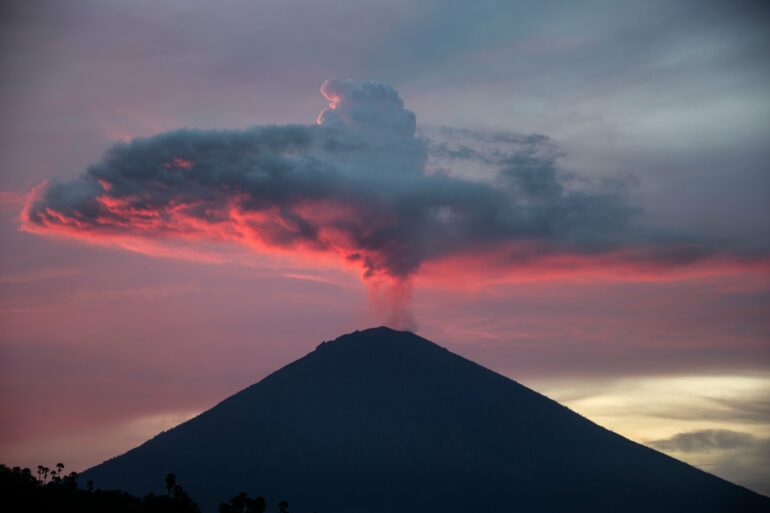The discovery of the driving force behind the world’s deadliest volcanic events could help improve forecasting of their devastating effects, new research suggests.
The findings reveal the mechanism that enables dense, scorching avalanches of a mixture of rock, ash and gases ejected during volcanic eruptions—called pyroclastic flows—to travel at up to 100 miles per hour.
Better predicting the path of pyroclastic flows—which can reach temperatures of 600°C—could help prevent injuries and deaths following volcanic eruptions, researchers say.
More than 600 million people around the world live in regions that could be hit by pyroclastic flows.
The pyroclastic flow triggered by the eruption of Mount Vesuvius in 79 AD is one of the most famous examples of these lethal events.
While scientists have long been aware of the immense dangers they pose, the underlying mechanism that enables them to travel at such high speed and long distances—up to 12 miles—had remained unknown.
Fluid-like behavior
Now, a team led by an Edinburgh researcher has revealed the science behind so-called block-and-ash flows, the most common and destructive type of pyroclastic flow. Their work is published in the journal Nature Communications.
They identified a mechanism that greatly reduces the friction of the dense volcanic mixtures, enabling them to travel at high speed.
The process—called fragmentation-induced fluidization—causes the base layer of pyroclastic flows to exhibit fluid-like behavior.
This effect is triggered by rapidly compacting the mixture, and raising the pressure between fine particles after large blocks have disintegrated into powder.
This enhanced fluidity, coupled with the large amounts—often millions of tons—of volcanic material, is the reason pyroclastic flows can travel far at high speeds as dense avalanches, destroying everything in their path, the team says.
Density changes
The researchers conducted a comprehensive analysis by examining pyroclastic flow deposits from previous eruptions at Mount Merapi in Java, Indonesia, in 2006 and 2010.
They also carried out laboratory experiments and ran computer simulations to investigate the impact of density changes within pyroclastic flows and the ability of their granular mixtures to become fluid-like.
“The discovery of the fragmentation-induced fluidization process is hugely significant, as it enables us to develop more reliable numerical models that can accurately evaluate pyroclastic flow hazards around both current and potentially future active volcanoes. Our findings not only reveal a fundamental geoscience principle but also urges us to reconsider the focus of our field-based studies. This work lays the foundation for a multitude of investigations that my research group at University of Edinburgh will undertake, ultimately refining and reshaping our understanding of volcanic hazards,” says Dr. Eric Breard, School of GeoSciences.
More information:
Eric C. P. Breard et al, The fragmentation-induced fluidisation of pyroclastic density currents, Nature Communications (2023). DOI: 10.1038/s41467-023-37867-1
Provided by
University of Edinburgh
Citation:
Deadly volcanic flow insights could aid forecasting (2023, May 2)
